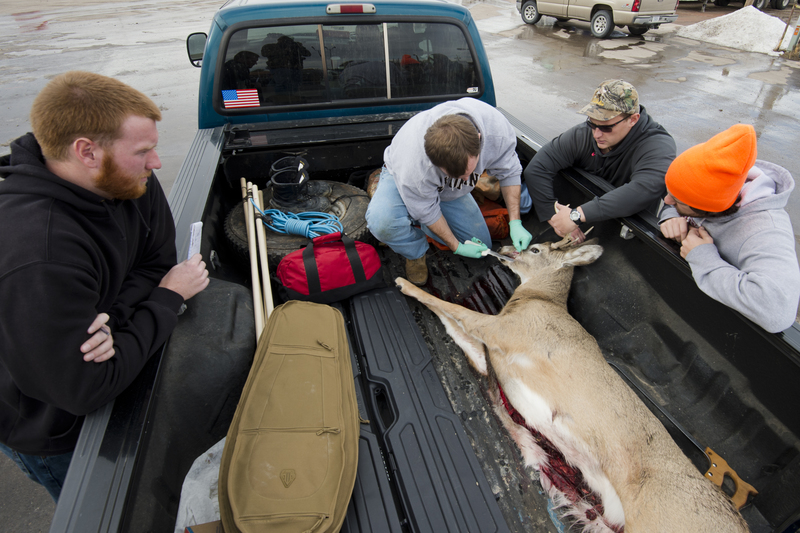CSC Wildlife Club members assist Nebraska Game and Parks Commission

Chadron State College’s Wildlife Club partnered with Nebraska Game and Parks wildlife division staff to assist at the Chadron deer check station in late November.
According to Nebraska Game and Parks Commission Wildlife Division Northwest District Manager and CSC graduate, Micah Ellstrom, some of the student’s responsibilities at the deer check station included interacting with hunters, collecting harvest data, and learning how to age deer based on tooth wear.
“The students are able to build relationships with commission staff as well as acquiring in-the-field experiences relative to their current education and career goals,” Ellstrom said.
Chadron’s big game check stand was located at Big Bat’s Conoco. Species checked-in included antelope, deer, and elk. During deer season there was an average of one to five students working at the station.
“This opportunity to gain the hands-on experience as a student continues to be very advantageous to both parties involved. There are numerous former students that are currently employed by the Game and Parks Commission locally, as well as on a statewide level,” Ellstrom said.
For many years CSC students have been volunteering and gaining hands-on experience through the Nebraska Game and Parks Commission. Both entities benefit from working together. CSC students have helped with other Nebraska Game and Parks Commission projects by assisting with bighorn sheep captures and conducting swift fox surveys.
During bighorn sheep captures, typically five or more students participate.
“The students often provide the ‘muscle’ to get the captured animals from the helicopter drop off point to the processing site,” Ellstrom said.
Students then go to the processing site to learn how to handle captured wildlife, take disease samples, take biological measurements and other data, affix radio collars and ear tags, and other associated tasks.
Teresa Frink, associate professor and department of applied sciences chair, has guided students in the effort to document the current distribution and abundance of swift fox. Students utilized different survey methods to determine presence and or absence of swift fox at various locations. Ellstrom appreciates the support.
“We will continue to keep the students involved in projects where we can,” Ellstrom said.
Category: Campus News, Range Management, Student Clubs & Organizations
